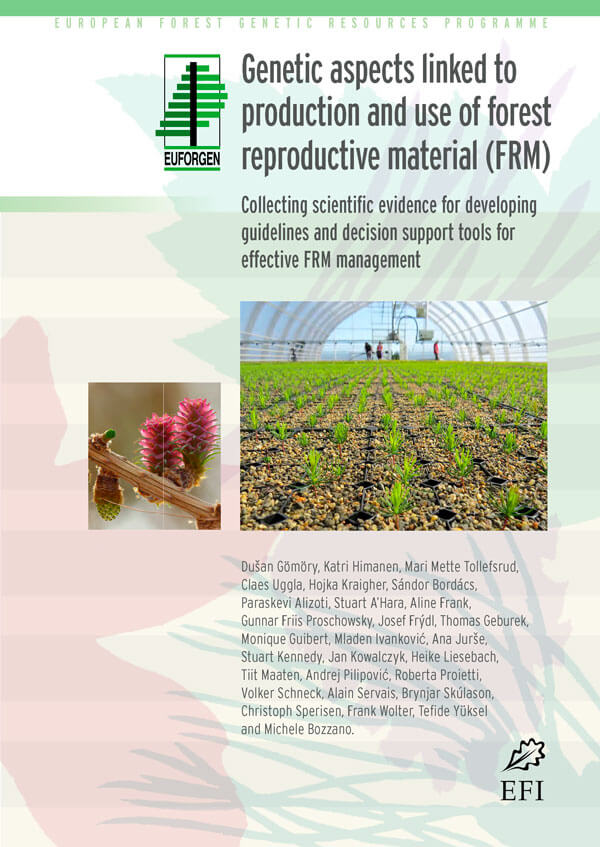Genetic aspects linked to production and use of forest reproductive material (FRM)
This report summarises the current state of knowledge in genetic aspects linked to the production and use of forest reproductive material (FRM).
The first chapter describes the different categories of FRM, considers the strategic choice between artificial and natural regeneration in the face of climate
change, and articulates the need for and purposes of FRM. Chapter 2 outlines the FRM production chain, in terms of: i) FRM approval, management, collection and certification (seed sources, stands, orchards, plus trees and clones others); ii) Testing standards and examples; iii) Effect of seed and seedling material not intended for use as FRM on forest genetic resources; iv) Breeding effects on basic material including conservation strategy; v) Harvesting, processing and storage of seeds; vi) Nursery practices; vii) Certification and Traceability; and viii) FRM Trading and Transport. Chapter 3 examines FRM with regard to: i) Forest regeneration strategies – especially considering climate change, and ii) Assisted migration and available decision support tools. Chapter 4 provides a detailed overview
of forest establishment methods, and chapter 5 looks at keeping records of seed origin to improve forest management. The final chapter offers 38 recommendations arising from the review.
This work is the result of an international collaboration rooted in EUFORGEN for more than two decades. It is built on the firm belief that the genetic element is decisive for the creation of a resilient forest capable of surviving threats and adapting to changes, thus enabling the evolution of ecosystems and the conservation of the productive landscape.
Authors: Dušan Gömöry; Katri Himanen; Mari Mette Tollefsrud; Claes Uggla; Hojka Kraigher; Sándor Bordács; Paraskevi Alizoti,; Stuart A’Hara; Aline Frank ; Gunnar Friis Proschowsky; Josef Frýdl; Thomas Geburek; Monique Guibert; Mladen Ivanković; Ana Jurše; Stuart Kennedy; Jan Kowalczyk; Heike Liesebach; Tiit Maaten; Andrej Pilipović; Roberta Proietti ; Volker Schneck; Alain Servais; Brynjar Skúlason; Christoph Sperisen; Frank Wolter; Tefide Yüksel ; Michele Bozzano
Publication Format: PDF
ISBN 13: ISBN 978-952-5980-96-7 (online)
Language: EN
Pages: 200

